On-Wafer Calibration Software
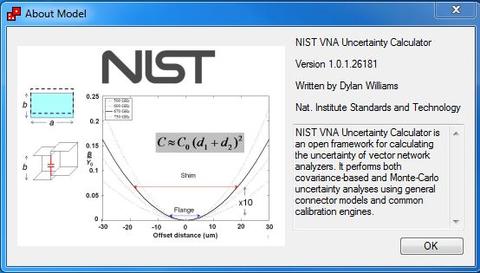
NIST Microwave Uncertainty Framework (Beta version)
The NIST Microwave Uncertainty Framework provides a "drag-and-drop" toolkit for managing the calculation of uncertainties in VNA and other measurements. The framework makes it easy to construct models for calibration standards and automates the calculation of uncertainties with both a conventional linear error-propagation analysis and a Monte-Carlo analysis capable of propagating uncertainties through nonlinear models. The framework includes a Vector-Network-Analyzer (VNA) Uncertainty Calculator for guiding the generation of uncertainties in scattering parameters. The framework also includes a post processor that allows the uncertainties in measured scattering parameters to be propagated to derived measurements, such as transistor gain, power, material parameters, and mismatch-corrected temporal signals. A password is no longer required to install this software.
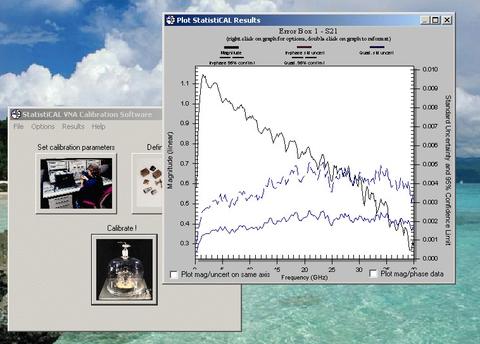
Statistical VNA Calibration Software Package
The StatistiCALTM VNA Calibration Software Package is our newest VNA calibration software package. It accommodates almost all coaxial and on-wafer standards, and enables a "mix and match" philosophy to VNA calibration. The software is based on an algorithm developed at the U.S. National Institute of Standards and Technology (NIST) and the Physikalisch-Technische Bundesanstalt (PTB) of Germany, which is able to estimate the uncertainty of its own results due to random errors. The algorithm features a high degree of robustness, allowing it to find solutions even with poor initial estimates.
The software combines a decade of experience in statistics and orthogonal distance regression with an easy-to-use user interface. Research at NIST has extended the analysis of uncertainties caused by random errors to include systematic errors in the solution. The uncertainties in the solution are represented by a covariance matrix that relates errors in both the VNA calibration and measurements of the device under test. In addition, the algorithm determines coverage factors based on the different numbers of degrees of freedom associated with various parts of the solution.
Read a paper describing the algorithms employed by this new software package. Read a paper comparing this algorithm to MultiCal. A password is no longer required to install this software.
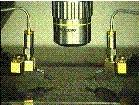
MultiCal
MultiCalTM was developed by the NIST/Industrial Measurement Consortium. On-wafer measurement software implementing the multiline TRL calibration, LRM with imperfect standards, off-wafer CPW calibrations, calibrations for lossy lines, and the calibration comparison method for accuracy assessment. Download the user's manual here. The HTBasic interpreter runs under Windows 10, and some other operating systems.
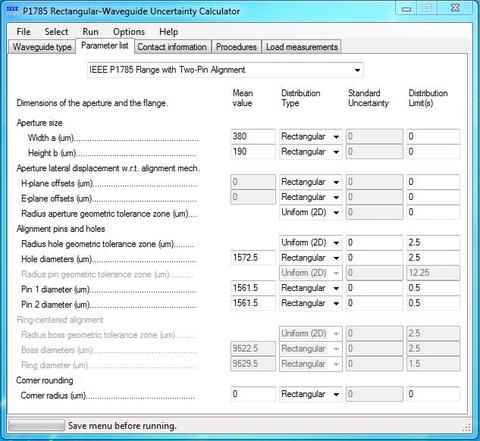
IEEE P1785 Rectangular-Waveguide Uncertainty Calculator
This software package implements the guidelines delineated in the IEEE P1785.3 Standard for Rectangular Metallic Waveguides and Their Interfaces for Frequencies of 110 GHz and Above. Part 3: Recommendations for Performance and Uncertainty Specifications. The software translates measured mechanical and electrical uncertainties in their flanges into electrical uncertainties in accordance with the guidelines in IEEE P1785.3. A password is no longer required to install this software.
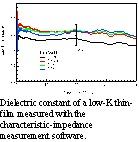
Software designed to accurately determining the characteristic impedance of transmission lines fabricated on silicon substrates. The Characteristic Impedance of Silicon Transmission Lines Software was developed by the NIST/Industrial Measurement Consortium and is only available to Consortium members until May 1999.
To obtain a copy of this software, read the user agreement and request a dylan.williams [at] nist.gov (password). Please include the statement "I have read and agree to the terms and conditions of the NIST Measurement Software user agreement" in your e-mail. Download a paper comparing this algorithm to other methods.

causalcat.zip
Software for computing causal characteristic-impedance magnitude from the phase of the integral of the Poynting vector over the guide cross section. The resulting characteristic impedance satisfies the requirements of a new causal power-normalized circuit theory.
Read the user agreement. Request a dylan [at] boulder.nist.gov (password). Please include the statement "I have read and agree to the terms and conditions of the NIST Measurement Software user agreement" in your e-mail. Download preprint of a paper describing the algorithm.
Read the story of the Causal Cat.
Oscilloscope Time-Base Correction Software
Software for correcting for jitter, drift, and time-base distortion in your oscilloscope.
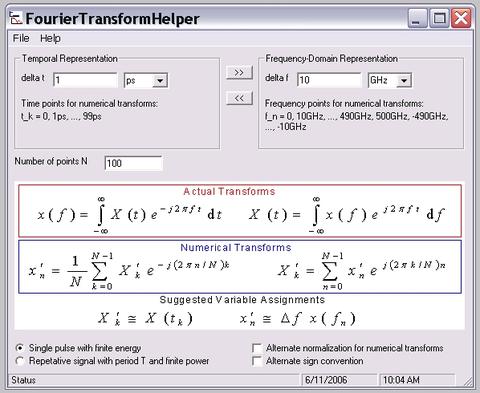
Fourier-Transform Helper Software
Software to assist in correctly applying the numerical Fourier Transform. See related paper describing terminology for oscilloscope calibrations.
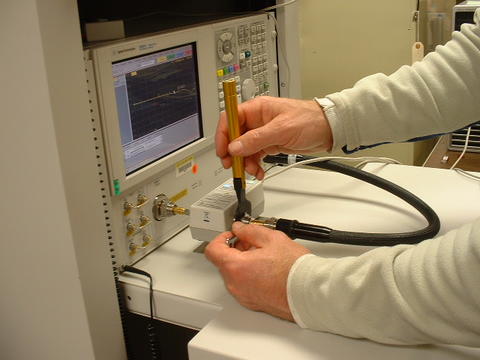
VeridiCal Installation Software
Use VeridiCal to automate VNA verifications with electronic calibration units. Not only does the software streamline the verification process, but it more completely verifies the calibration and allows you to see the impact of the calibration errors on your device under test directly. Read a paper about VeridiCal. This software requires a NIST-calibrated electronic verification artifact and requires signing special use agreements.
*We use trade names here to assist the user of this web site. It does not imply a recommendation or endorsement by the National Institute of Standards and Technology. StatistiCAL is a trademark of the National Institute of Standards and Technology.

